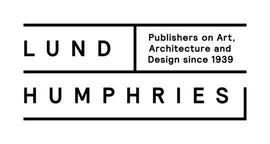Lund Humphries Landmarks: Grim Glory – Pictures of Britain Under Fire edited by Ernestine Carter (1941)
Antony Penrose explains the fascinating story behind the book which revealed the realities of London’s Blitz to the American public.
By the time the full ferocity of the Blitz began on September 7 1940 Lee Miller, formerly a fashion model turned Surrealist photographer in Paris and collaborator of Man Ray, had been working freelance for Vogue for nearly a year. Her accreditation as a War Correspondent for the US Army was still two years away and she was desperate to find a more meaningful way of contributing to the war effort than photographing fashion. As a civilian, access to the military was denied, but she carried her Rolleiflex camera everywhere and found plenty to satisfy her Surrealist eye in the often bizarre wreckage of the bombing. Her photographs were processed in the Vogue darkroom and perhaps this is how they came to the attention of Vogue’s editors.
Paper was rationed and to ensure a regular quota Vogue had to adapt to the needs of the Ministry of Information (MoI). Features reflected the magazine’s role in raising morale by encouraging women to look their most beautiful, but Vogue Editor Audrey Withers wanted greater relevance to the war.
The origin of Grim Glory is hard to trace but it is certain the MoI wanted to find ways to show the American public the terrible battering Britain was enduring in the hope of influencing the USA to enter the war. It was Vogue’s Ernestine Carter who became the book’s editor, leading with 22 of Miller’s images. The MoI contributed a further 87 from official photographers and agencies. The cover photograph was Herbert Mason’s famous dome of St Paul’s Cathedral wreathed in smoke. The CBS London commentator Ed Murrow contributed the preface. As fellow Americans, Murrow and Miller’s communication of Britain’s suffering held a personal passion which no doubt resonated with US readers.
Lund Humphries became the publishers and Grim Glory was released in May 1941 in London and in New York by Scribners. There were several editions, and we don’t know how big the print run was, but one measure of its impact is that The Museum of Modern Art in New York mounted a well-founded exhibition titled Britain at War – Paintings, Cartoons, Posters, Photography and Camouflage. The catalogue contained text by T.S. Eliot, Herbert Read, E. J. Carter and Carlos Dyer. Among the photographs eight of Miller’s images were featured.
In 1937 Miller met Roland Penrose, the British Surrealist artist, and she moved to London to be with him in 1939. Penrose was a friend of Alfred Barr, the Director of the Museum of Modern Art, and it is possible this connection helped establish the show. Certainly friendships counted for a lot. Barr remained a close friend of Miller and Penrose in post-war years and was a frequent visitor to Farley Farm, their home in Sussex, so also Ernestine Carter and Audrey Withers. Another friend and visitor was Peter Gregory, the Chairman of Lund Humphries. After the war he became, with Penrose, Read and others, one of the co-founders of the ICA. In 1954 Miller photographed his benign portly figure kneeling by her herbaceous border trowelling out powder from a can labelled SLUG DEATH – ONE TASTE AND THEY ARE DEAD. Perhaps Miller had spotted a metaphor for their wishful thinking about the enemy during the Blitz.
Antony Penrose, 21st February 2014
© Copyright Antony Penrose 2014. All Rights Reserved.
Antony Penrose is the son of Lee Miller and Roland Penrose. He is the Director of The Lee Miller Archives and The Penrose Collection and the author of numerous books on his parents, including The Lives of Lee Miller (Thames & Hudson), Roland Penrose the Friendly Surrealist (Prestel), The Boy Who Bit Picasso (Thames & Hudson) and The Home of the Surrealists, soon to be re-published by The Lee Miller Archives. He also edited Lee Miller’s War (Thames & Hudson).
Farley Farm House, Lee Miller and Roland Penrose’s home in Sussex, is open to the public every Sunday, April through October.


